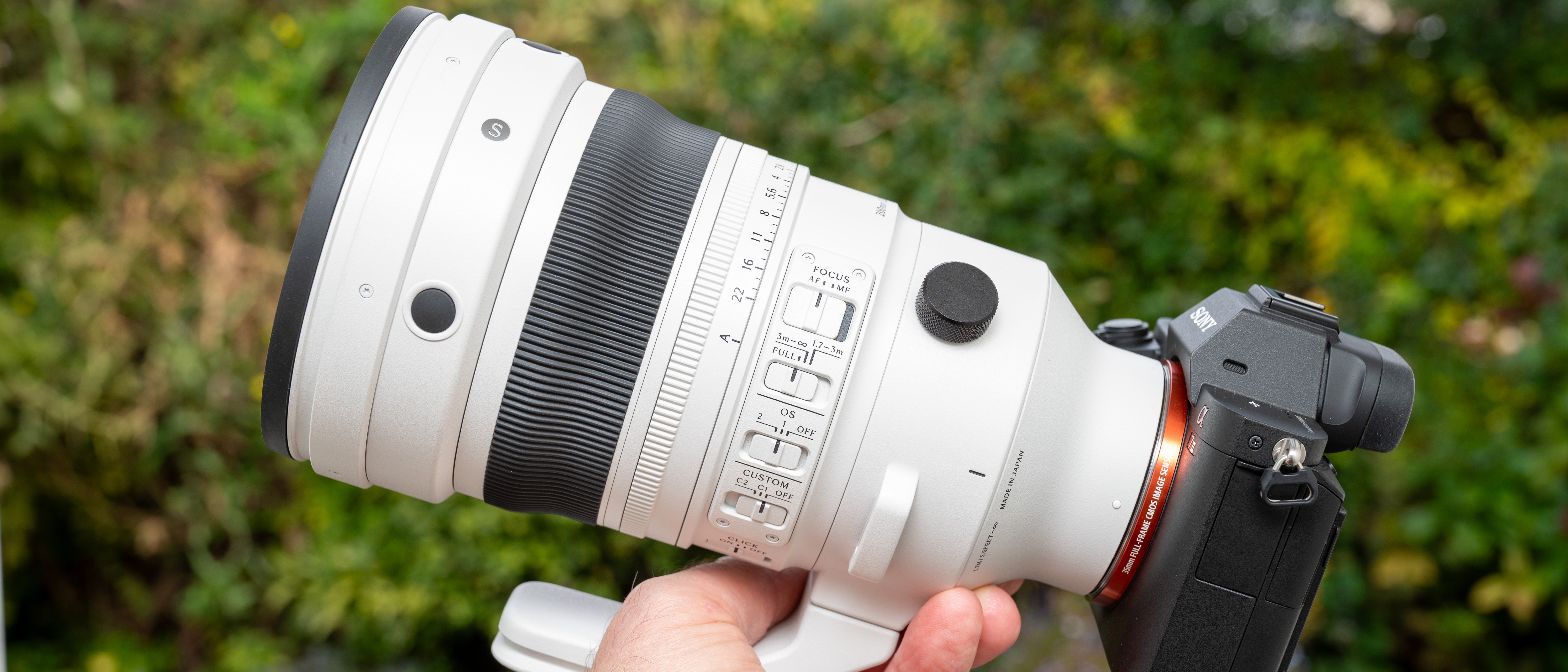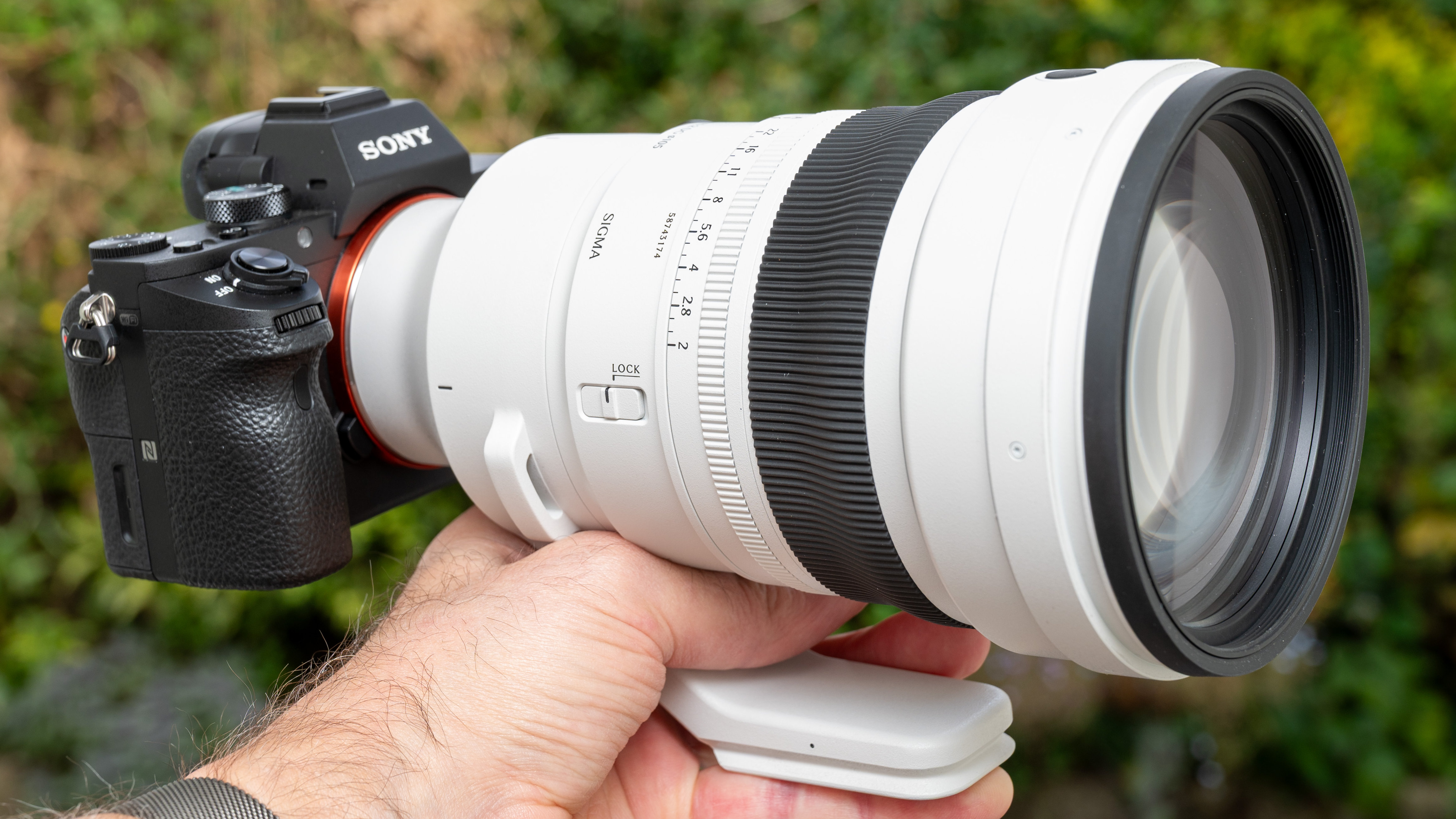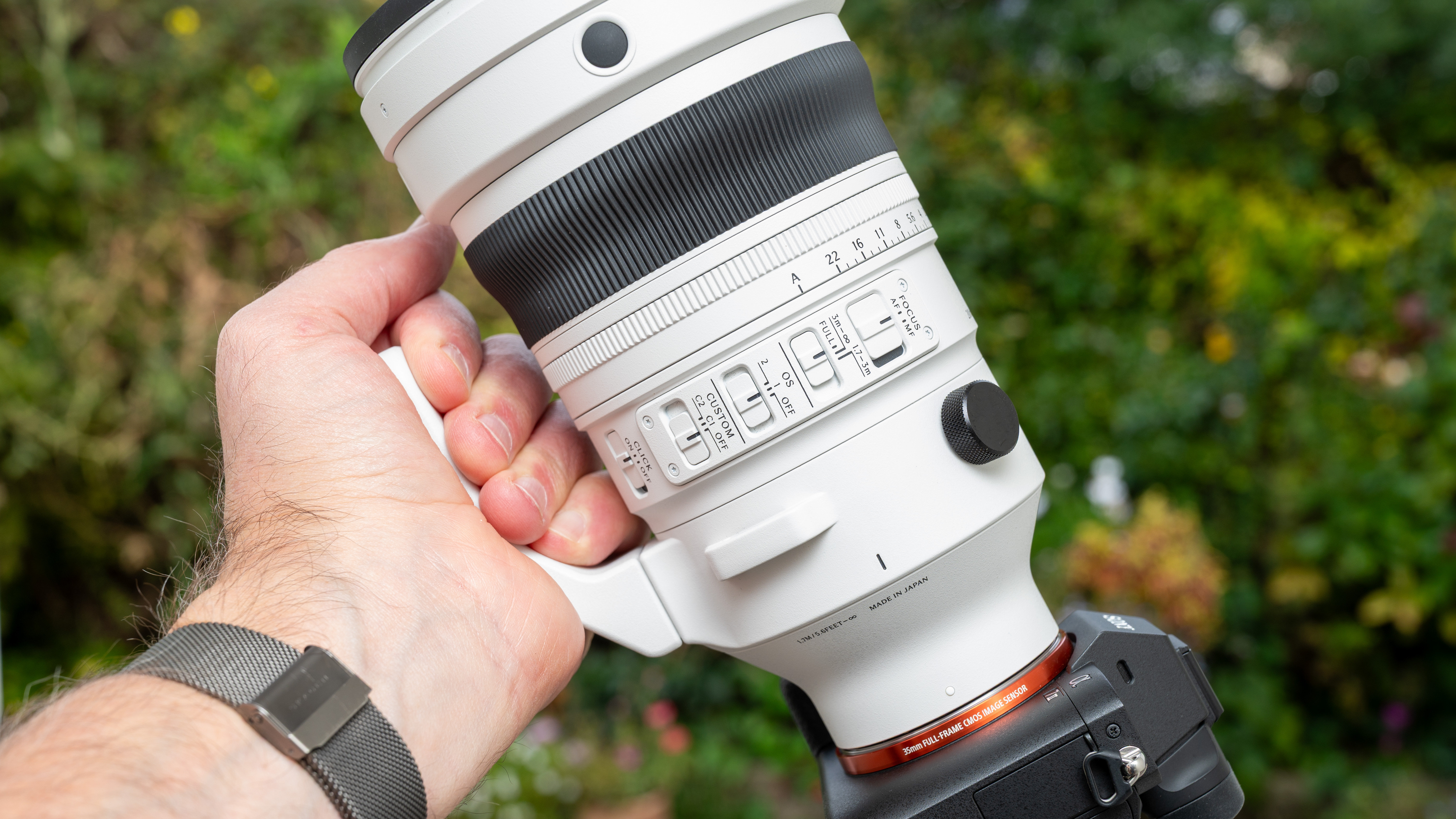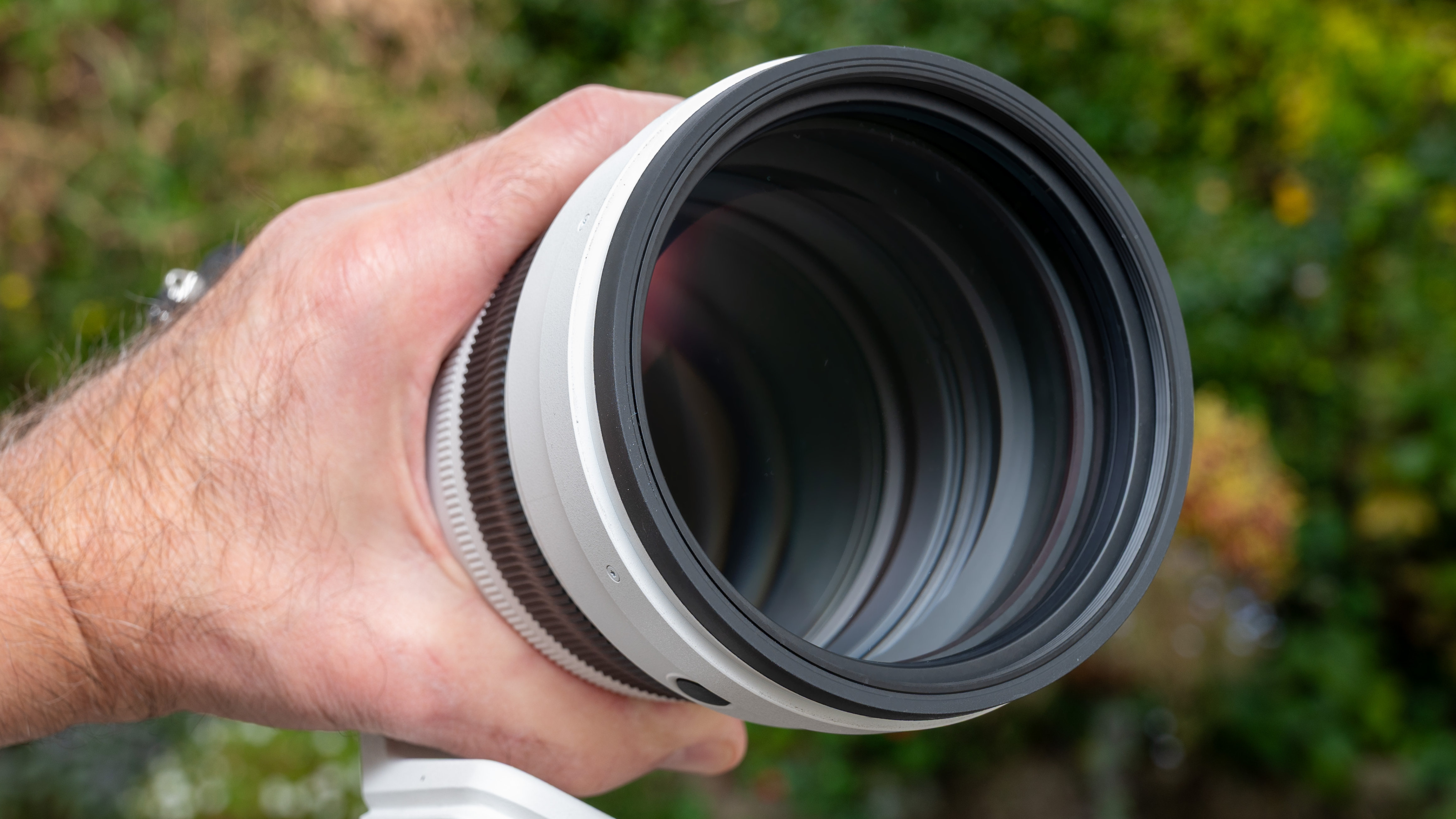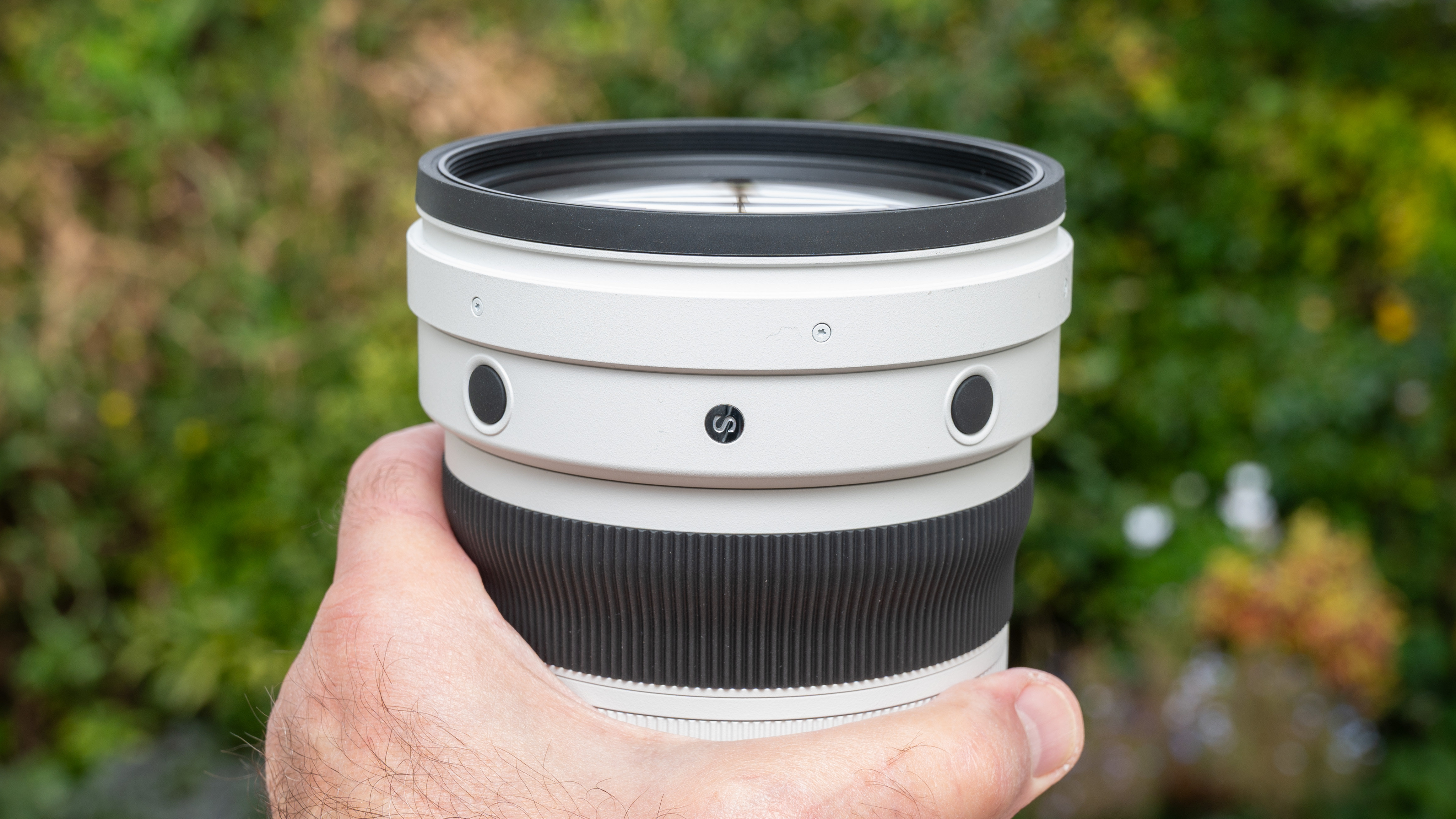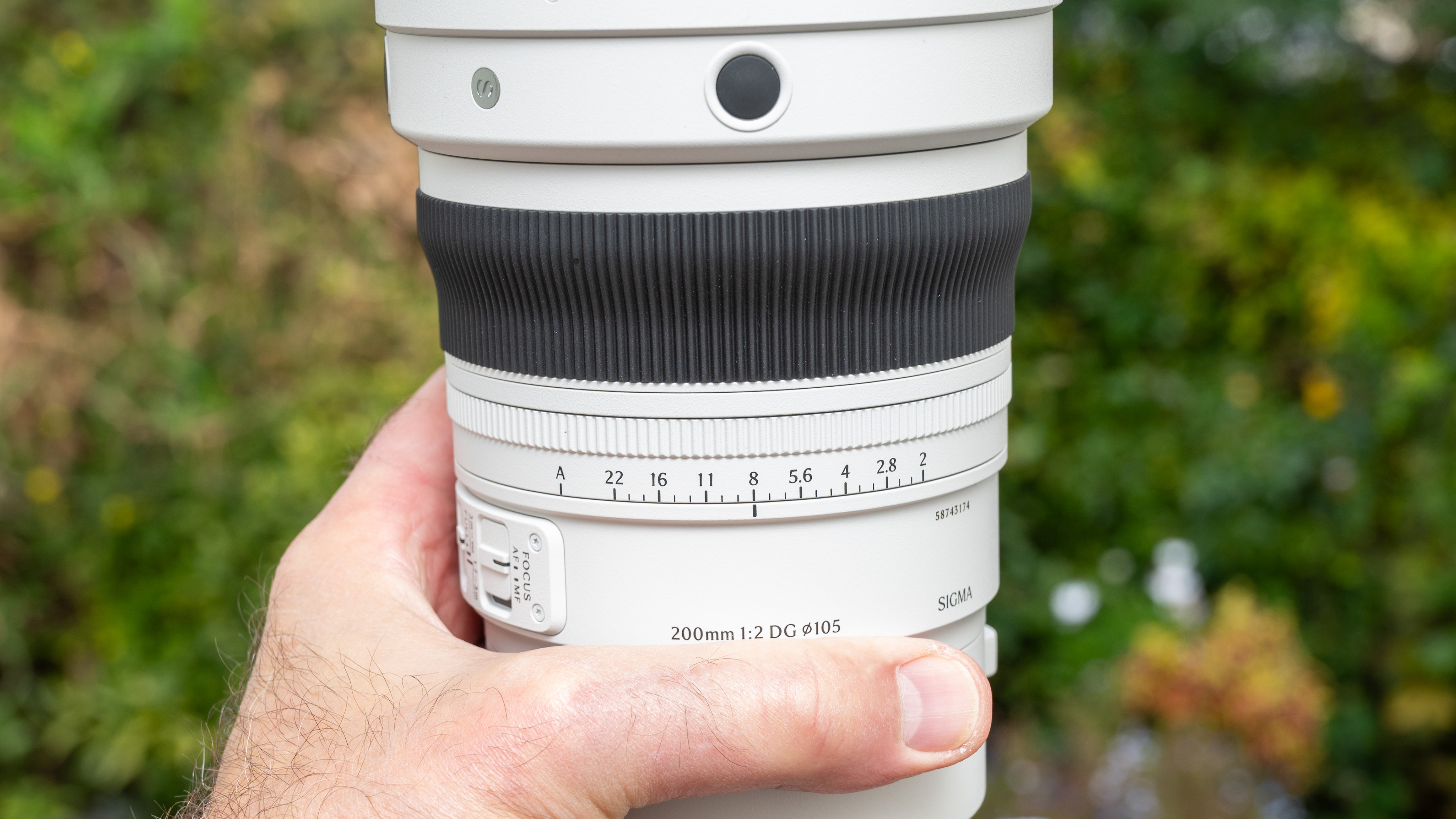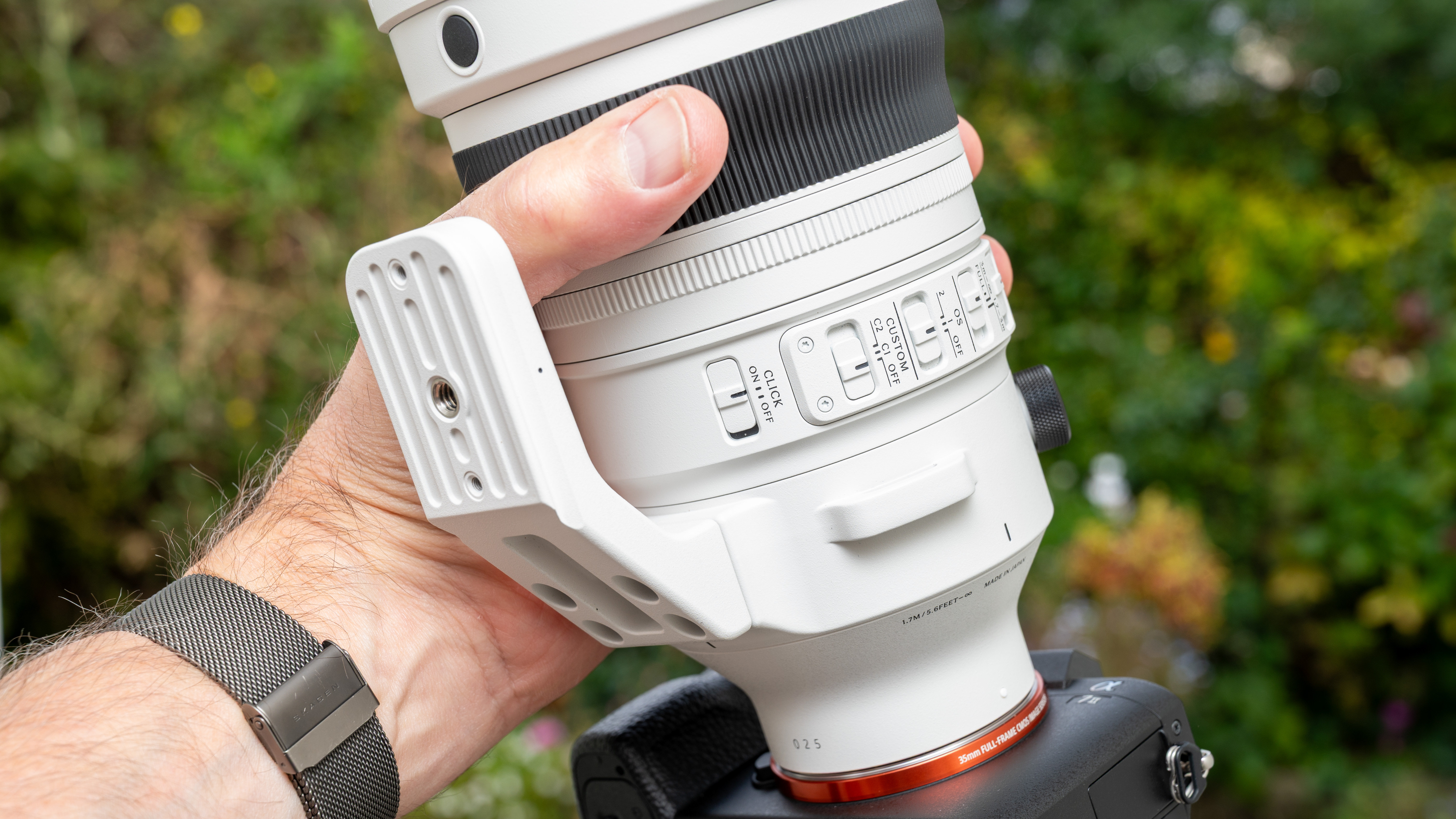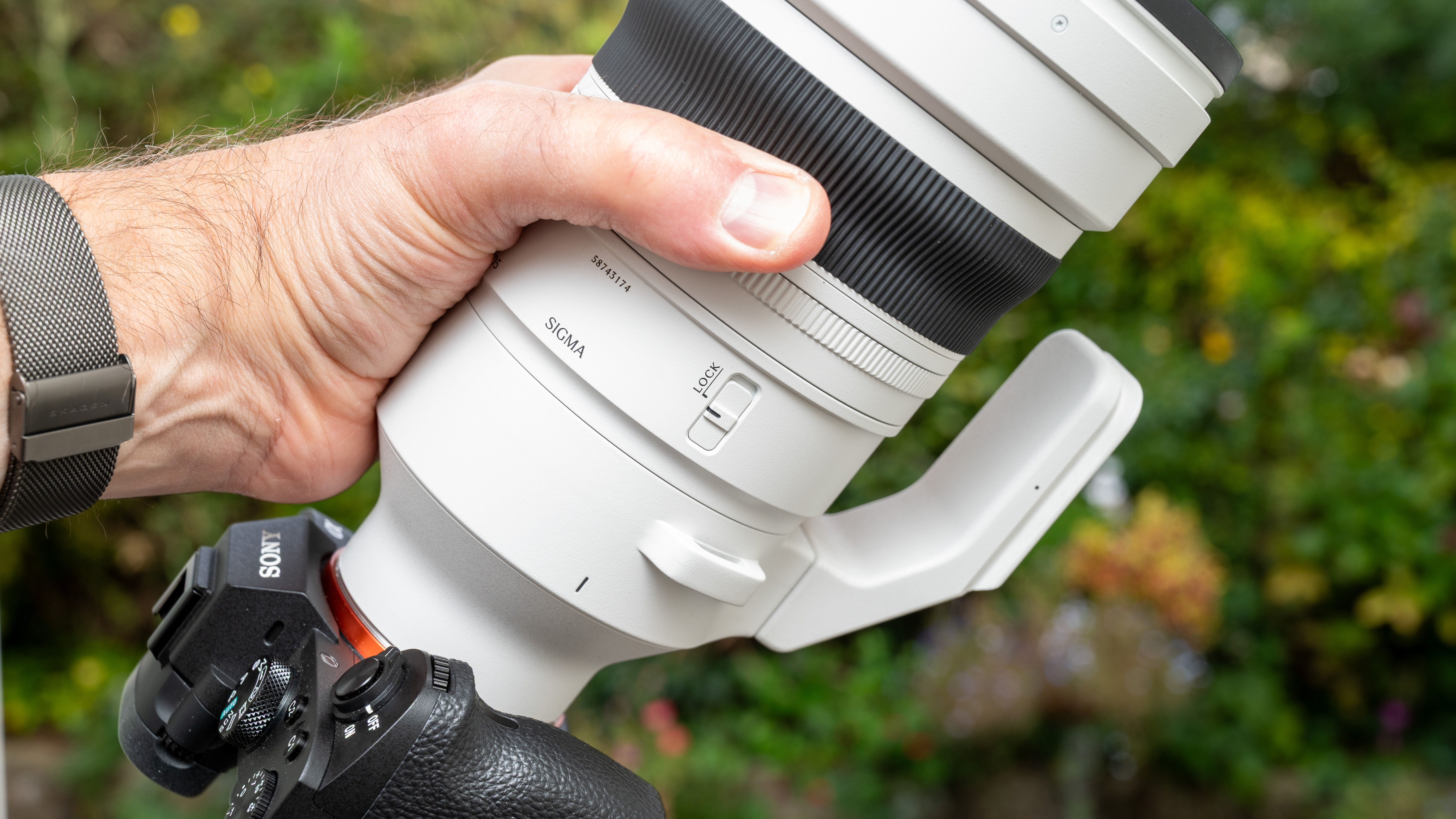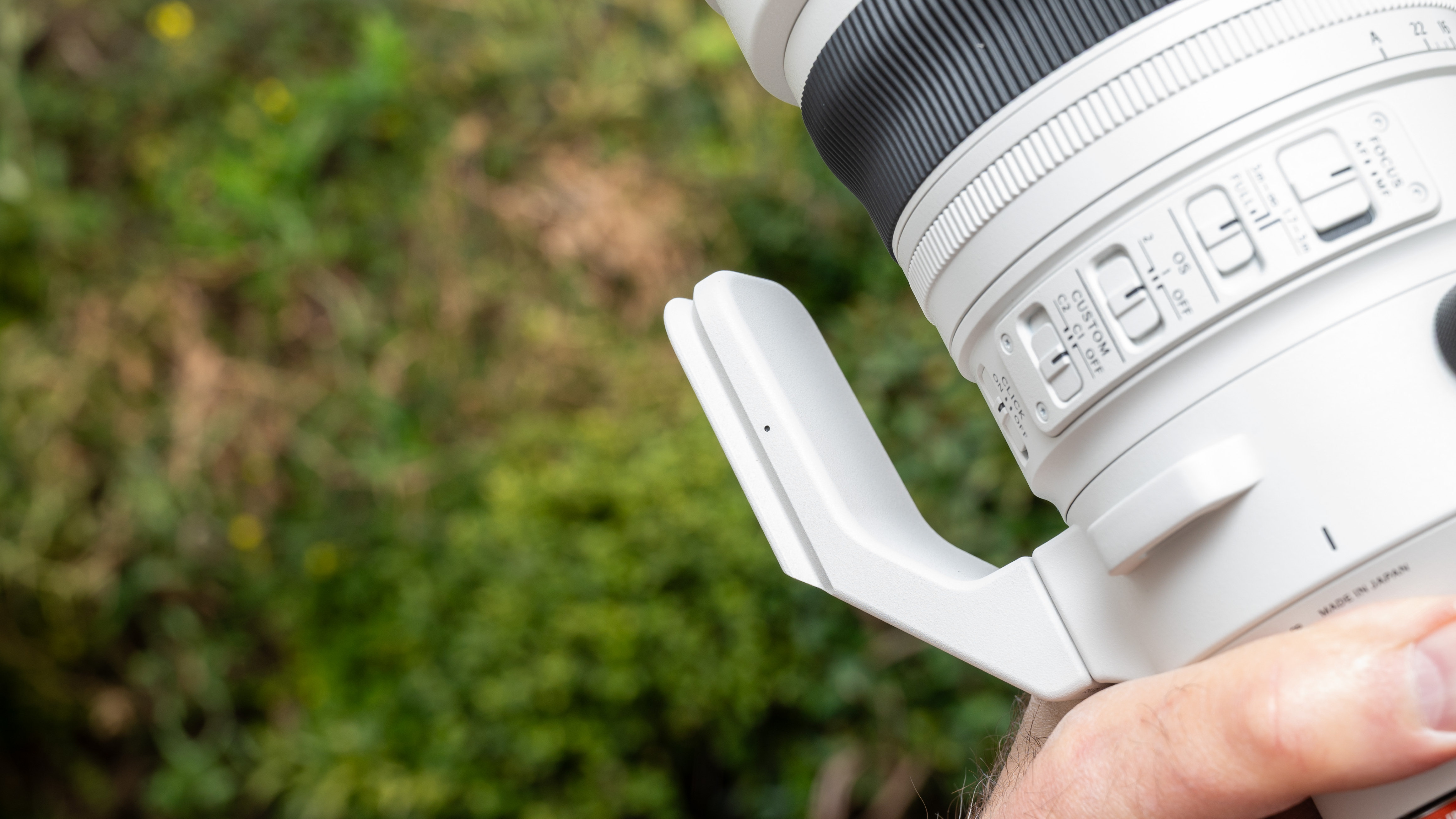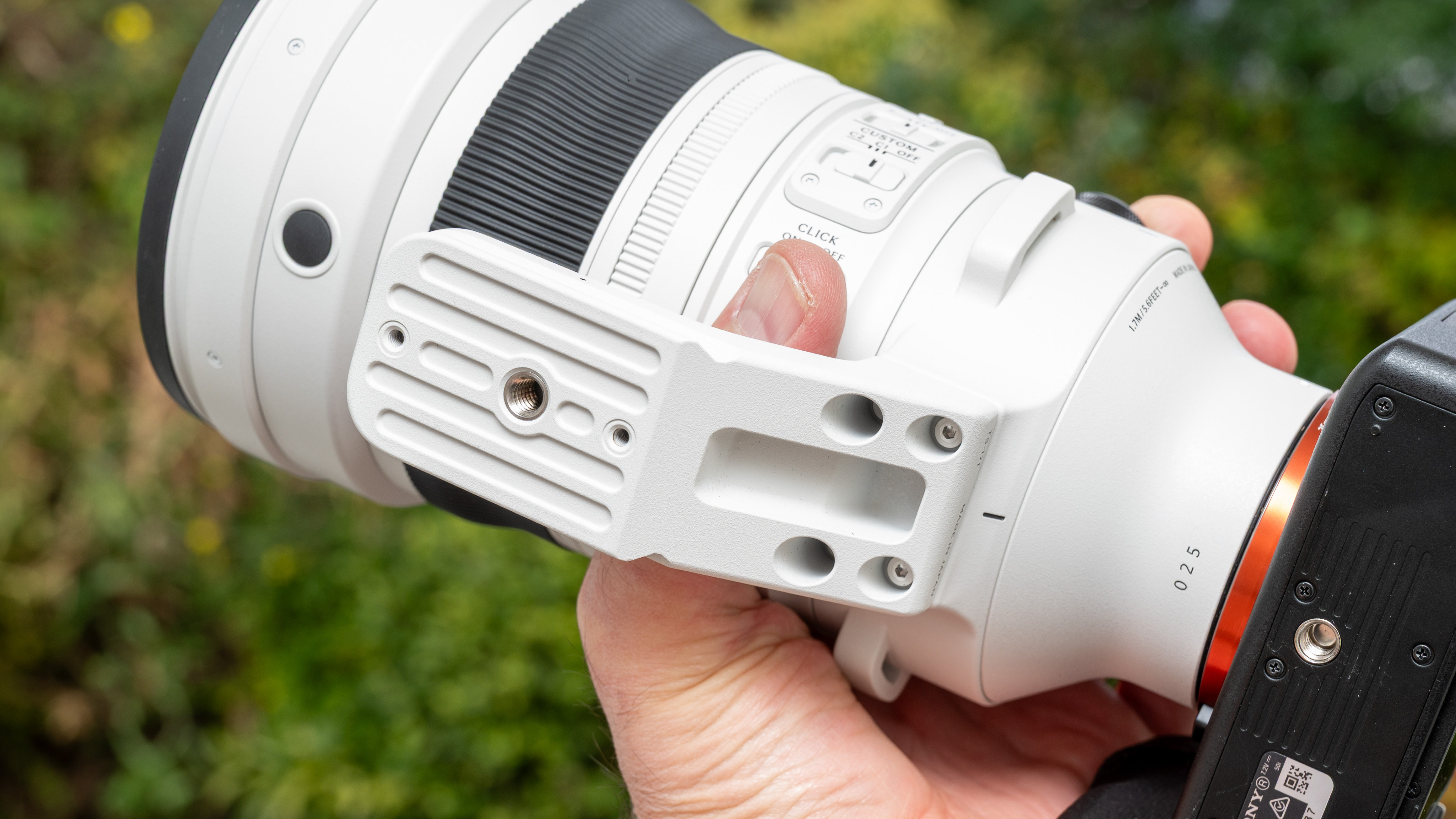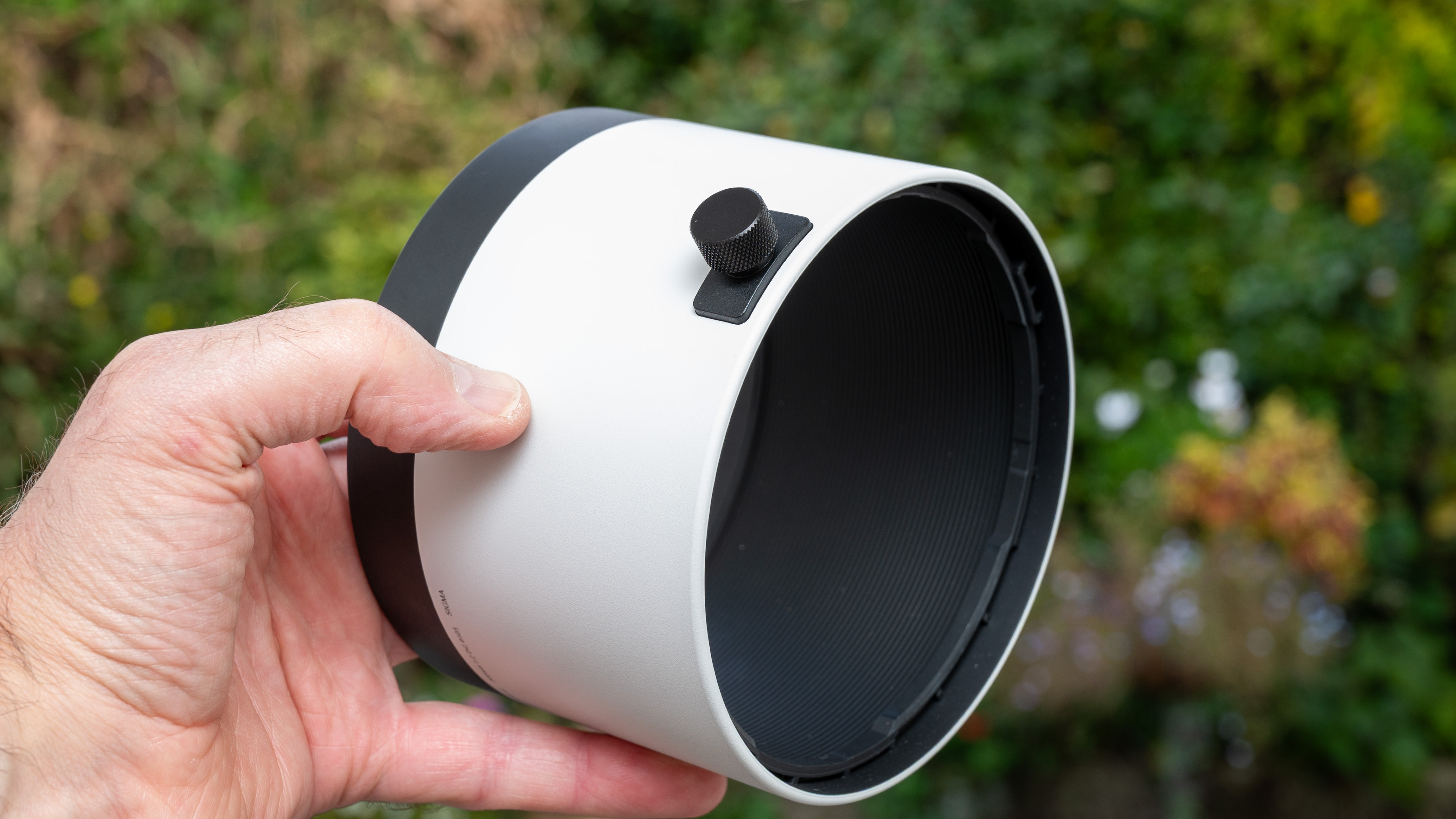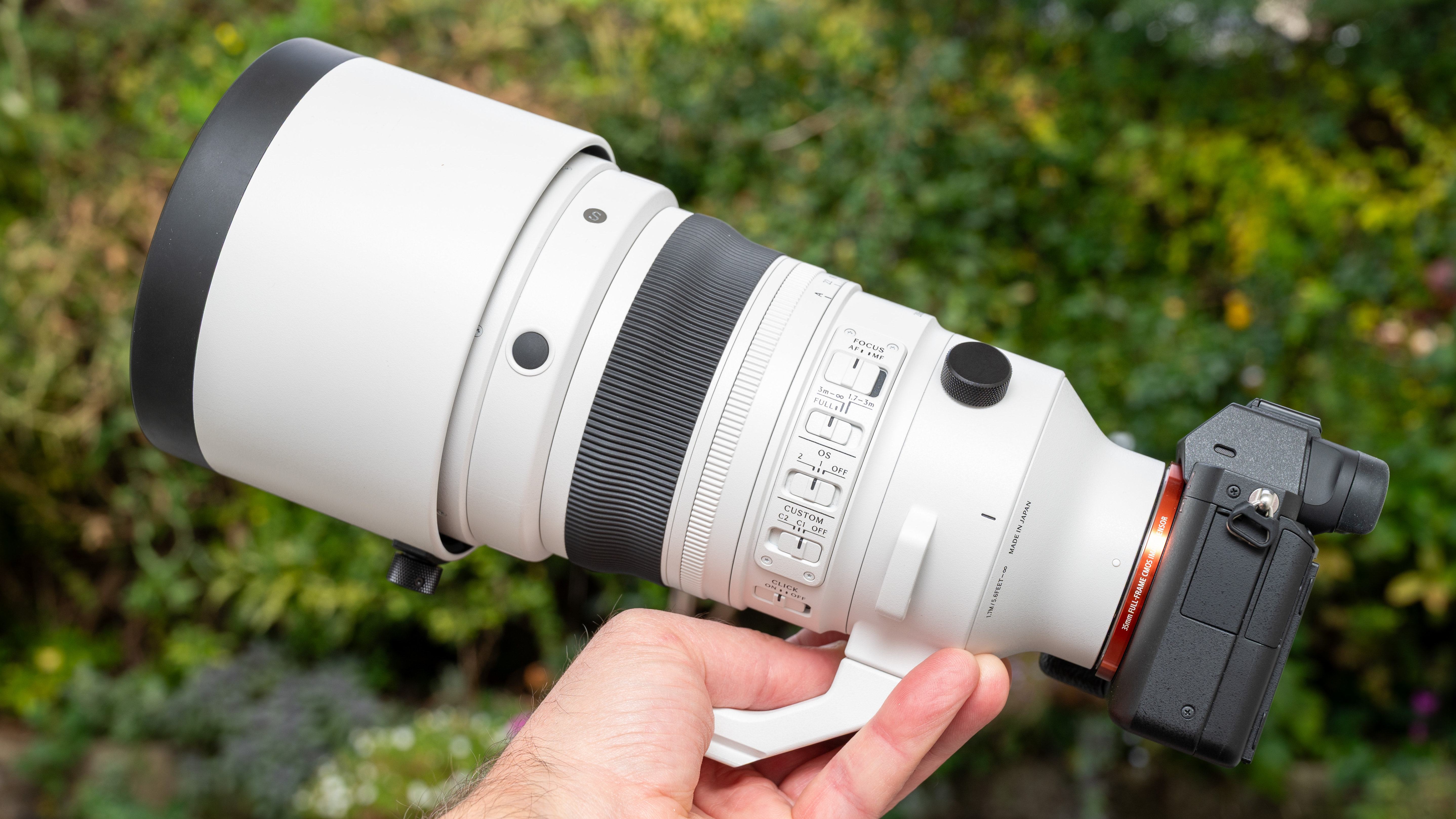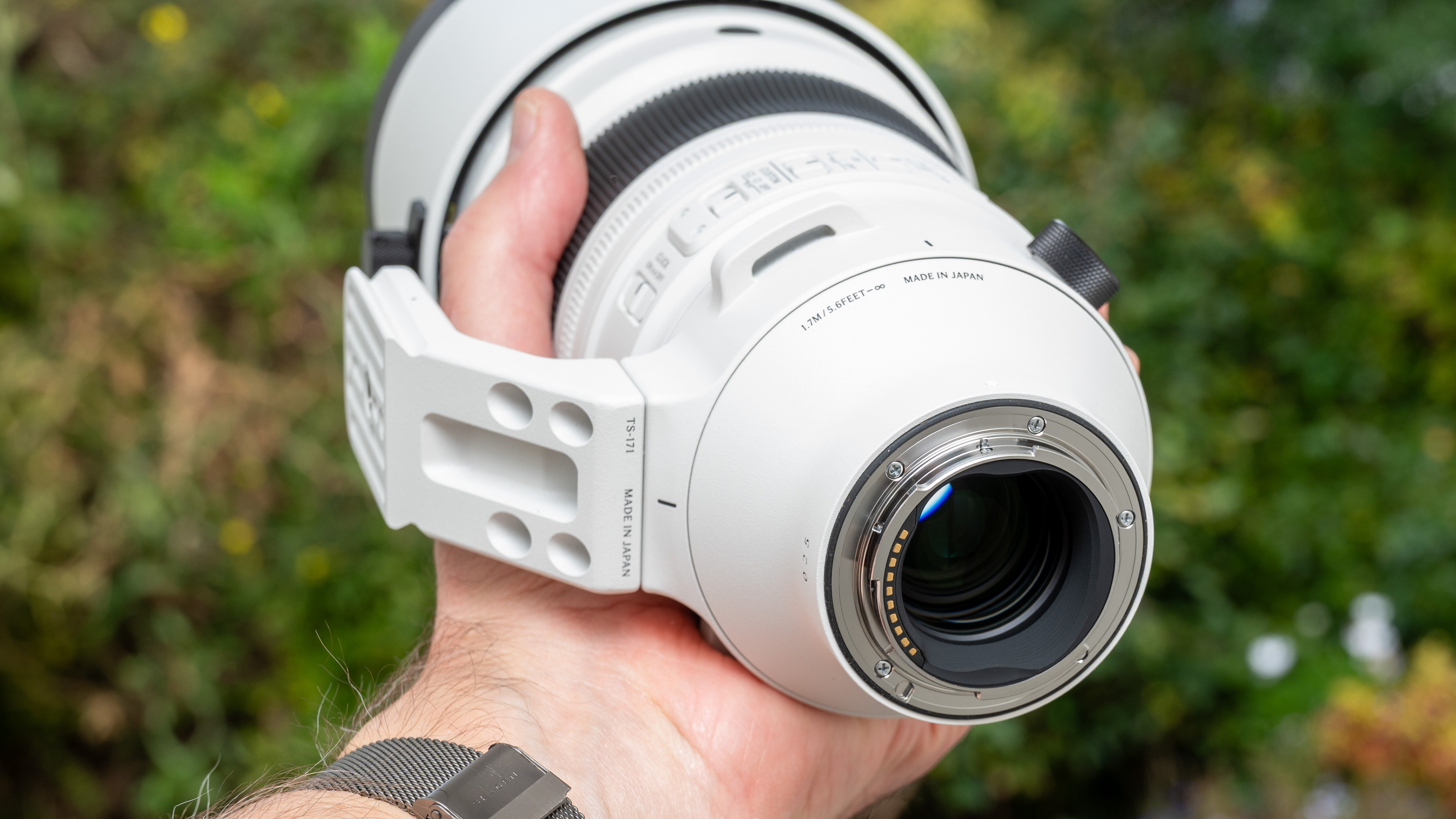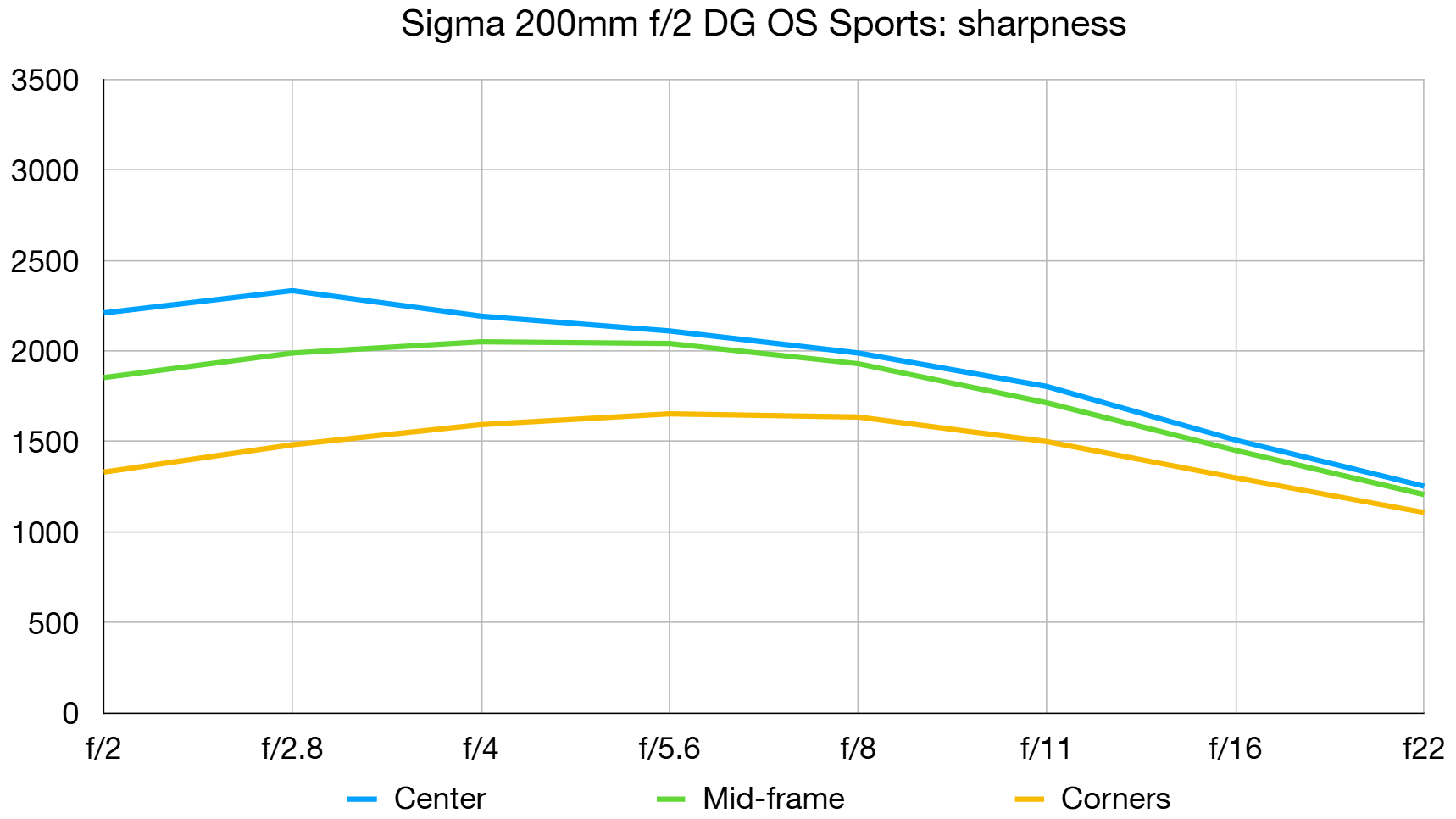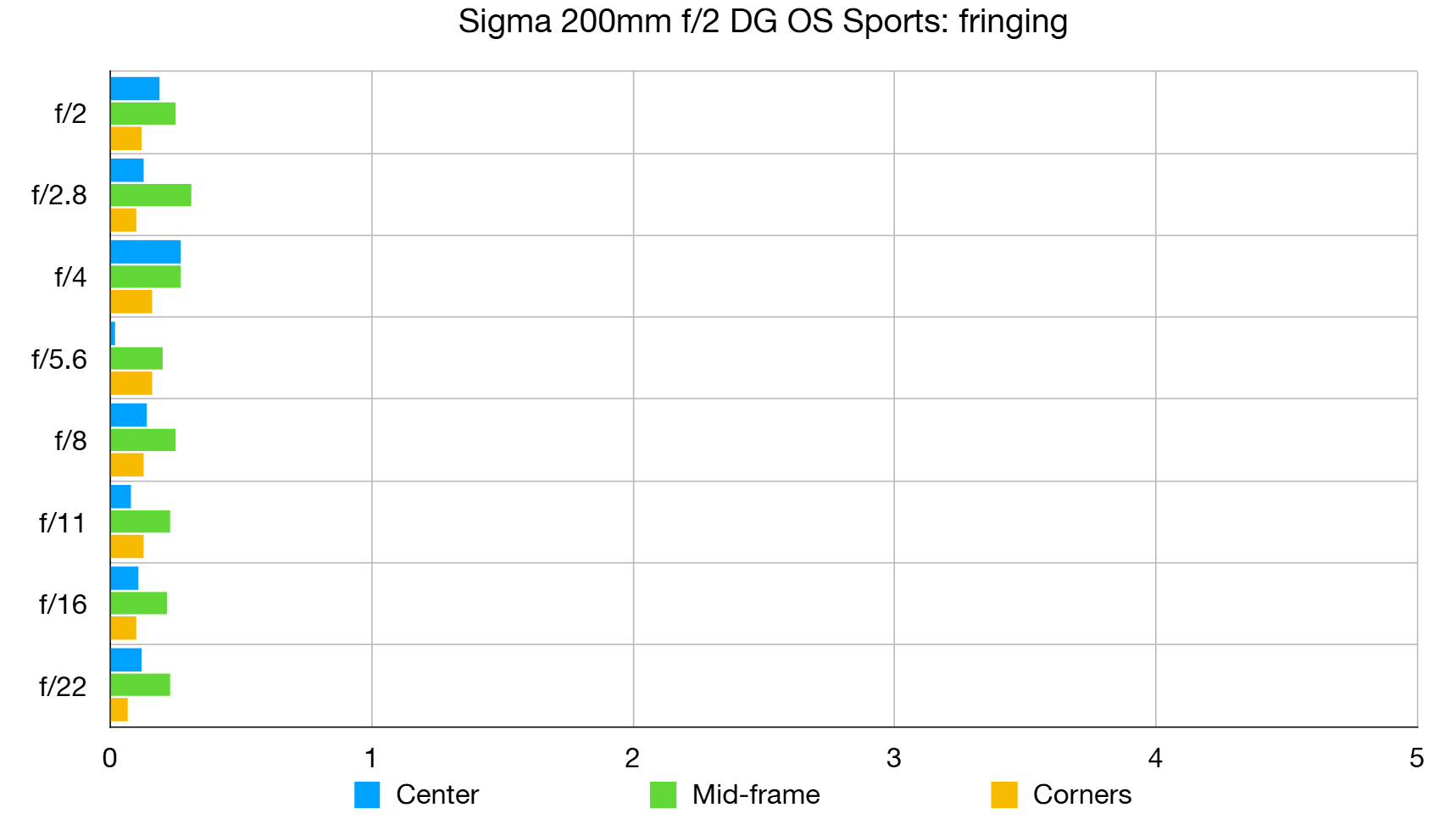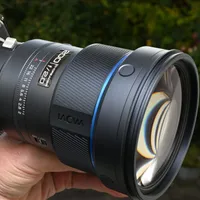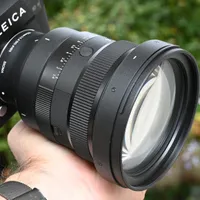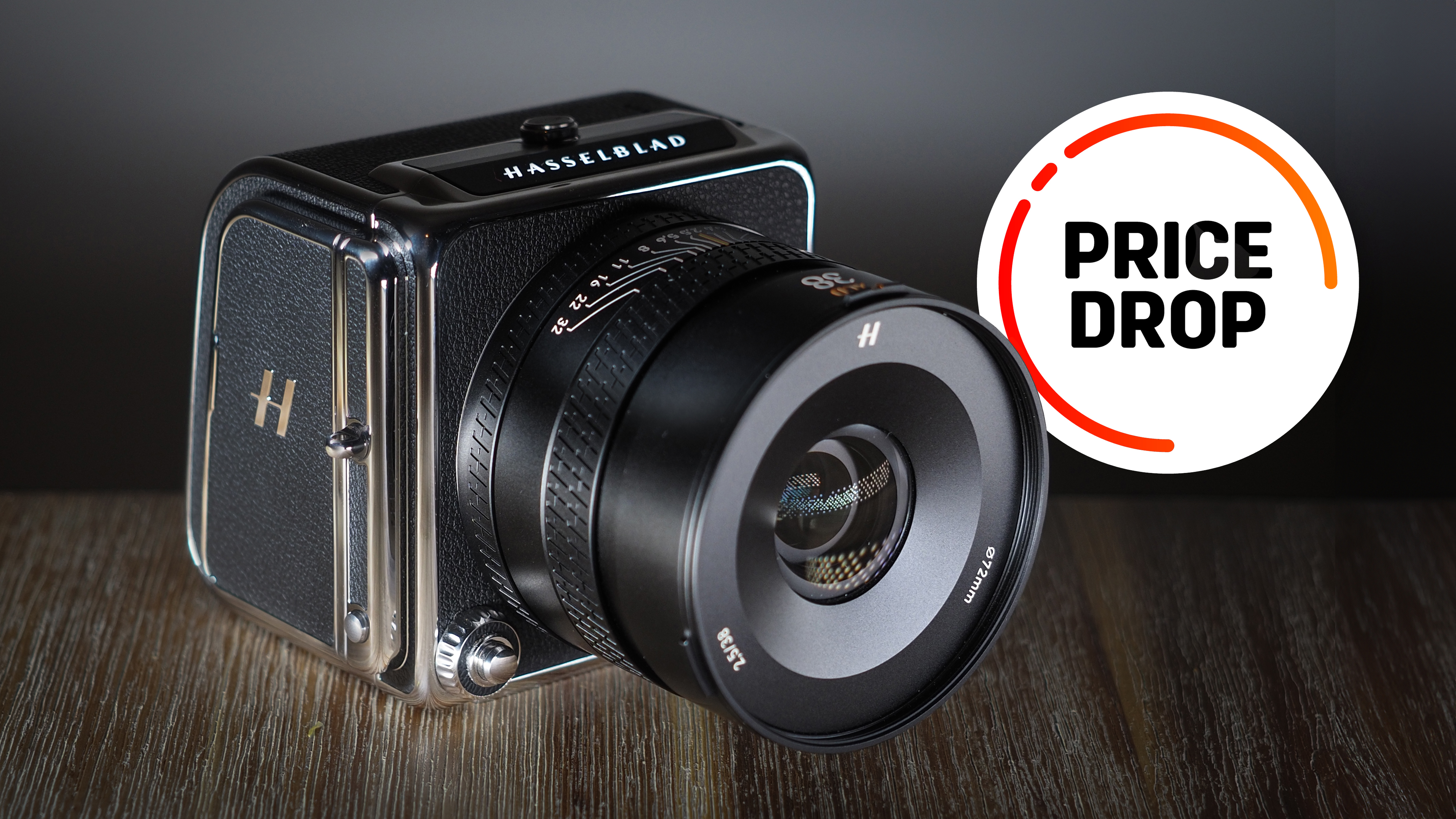Digital Camera World Verdict
I think that the Sigma 200mm f/2 DG OS Sports has two things that are hard to resist. No, make that three. The powerful 200mm telephoto reach is great for everything from action, sports and wildlife to portraiture, still life and even landscape photography. The fast f/2 aperture enables a super-tight depth of field and stop-motion shutter speeds. And the not-so-secret third option? 6.5-stop optical image stabilization for if and when you need it. Sure, this Sigma is a weighty lens with hefty price tag but it’s well worth it on both counts.
Pros
- +
f/2 with 200mm reach
- +
Speedy autofocus system
- +
6.5-stop optical stabilization
- +
High-end handling
Cons
- -
Necessarily big and weighty
- -
Only E and L mount options
- -
Big 105mm filter thread
- -
Pricey to buy
Why you can trust Digital Camera World
Sigma claims another world-first, but only just. This brand shiny new lens is the first 200mm f/2 prime for mirrorless cameras, but it’s not entirely without precedent. A brace of forerunners were the Canon EF 200mm f/2L IS USM and Nikon AF-S 200mm f/2G ED VR II, which were launched back in 2008 and 2010 respectively. But of course, they were designed for DSLRs rather than mirrorless cameras. They’re also both now obsolete, clearing the way for the Sigma which is available in Sony E and L-mount options for the mirrorless era.
And there’s more. While the Sigma was first across the finish line, it only pipped the Laowa 200mm f/2 AF FF to the launch date post, the Laowa being available not only in Nikon Z and Sony E mount options for mirrorless cameras but also in Canon EF mode for DSLRs. That said, I strongly suspect the EF version only exists to circumvent Canon’s tight RF mount regulations, the lens suiting Canon EOS R series mirrorless cameras via an EF-EOS R mount adapter. Back to the lens at hand, this Sigma sets out to be one of the best telephoto lenses for Sony cameras and one of the best L-mount lenses, although I do wish it was available in more mount options to suit other camera systems.
Sigma 200mm f/2 DG OS Sports: Specifications
Mount options | Sony E (FE), L-mount |
Lens construction | 19 elements in 14 groups |
Angle of view | 12.3 degrees |
Diaphragm blades | 11 |
Minimum aperture | f/22 |
Minimum focus distance | 1.7m |
Maximum magnification | 0.13x |
Filter size | 105m |
Dimensions | 119x201mm / 4.7x7.9" |
Weight | 1,820g / 4.0lb |
Sigma 200mm f/2 DG OS Sports: Price
Before the metric system came to town, we Brits used to cost things in terms of ‘pound for pound’. This Sigma lens is quite an exotic item, weighing in at £750 per pound. So, how’s that in the ‘scale’ of things, so to speak. The Sigma costs $3,299, £2,999, AU$6,500, which makes it look quite the bargain compared with the discontinued Canon EF 200mm f/2L IS USM at $5,999, and the Nikon AF-S 200mm f/2G ED VR II at $4,559, when you could still get them. However, the latter-day, Japanese-made Sigma is up against new Chinese competition, the Laowa 200mm f/2 AF FF costing just $1,799 for the Canon EF edition and $1,999 for the Nikon Z or Sony E version. That makes the Sigma more than 50 per cent more expensive, although it does boast a superior autofocus system and the addition of optical image stabilization, which is altogether absent in the Laowa lens. And with Sigma lenses being made in Japan rather than China, I’d expect it to be pricier anyway.
Sigma 200mm f/2 DG OS Sports: Design & Handling
Sports by name, sports by nature, the Sigma is a big, imposing lens finished in heat-resistant white, like those you see ranked up alongside the world’s biggest televised sporting events. But compared with sporting lens royalty, the Sigma has a less generous focal length of 200mm, making it less able to cover big distances. Then again, some photographers say that if a focal length of 200mm is insufficient, you’re just not close enough to the action.
The big upside for the Sigma’s relatively modest telephoto length for a ‘great white’ is that it has a comparatively super-fast aperture rating of f/2. Sticking with sports photography for a moment, that gives you the ability to freeze the action with fast shutter speeds, even for indoor sports or under very low lighting, without having to bump up your camera’s sensitivity too far and incur a drop in image quality. It also helps you to isolate the main subject in a cluttered scene and make it really stand out, thanks to a really tight depth of field. It’s a win-win, and not just for sports.
Although the focal length might be considered a bit long for classic portraiture, it does enable head-and-shoulders shots at the likes of weddings and other events when you can’t get as close as you might like. And you also get a compression in perspective, which can be flattering in portraiture, as well as working well for creative effect in still life, landscape photography and many other scenarios. Heck, the lens even works well for astrophotography, when you want to focus on a relatively small section of sky rather than taking in ‘the bigger picture’. The Sigma is designed to suit all of these scenarios and more besides.
Let’s start at the front. Look into the mouth of the lens and you can almost feel like you’re getting sucked into a black hole. Maybe that’s only natural, as the lens is designed to pull in a huge amount of light for a 200mm lens – twice as much as an f/2.8 lens. That demands wide-diameter glass and, sure enough, the Sigma has an oversized 105mm filter attachment thread. The glass itself includes two top-grade FLD (‘Fluorite’ Low Dispersion) and two SLD (Special Low Dispersion) elements, aiming to optimize sharpness and clarity while minimizing color fringing and other aberrations.
The best camera deals, reviews, product advice, and unmissable photography news, direct to your inbox!
To make the most of that specialist glass and keep it all in line, two of the most important features work together in tandem. First up there’s an HLA (High-response Linear Actuator) autofocus system, which aspires to be sufficiently fast to instantly lock onto sporting and other fast-moving subjects, as well as being able to track them in motion. The other is optical image stabilization, which is rated at 6.5-stop effectiveness and has dual switchable static/panning modes. Stabilization is based on Sigma’s latest algorithm and ‘Mode 2’ works when panning in any orientation – landscape, portrait or on the diagonal. Naturally, stabilization can’t counteract any movement on the part of the subject but for shooting static subjects, it can effectively freeze camera-shake in its tracks.
Just in front of the electronically coupled manual focus ring, there’s a set of three customizable function buttons, typically used for AF-Lock. The provision of three at 90-degree intervals around the circumference of the lens enables that one of them will fall naturally under your thumb in landscape orientation or when swiveling the camera to the left or right for portrait orientation shooting.
Just behind the focus ring is the aperture control ring. Unlike in some recent lenses, it’s a dedicated aperture ring with the upside that f/numbers are clearly printed on it for ready reference. You also get intermediate line markings for one-third f/stop increments. Two bonus features which are common and not so common include a click/de-click switch. This makes for precise and repeatable aperture adjustments when shooting stills, as well as free-flowing, stepless and silent adjustments when shooting video.
The less common bonus is a locking switch for the aperture ring to make sure it stays put when in Auto mode, for camera-driven aperture control. I’d like to see this fitted to every lens that has an aperture ring. The Auto position is at the far end, next to the f/22 setting, and the switch avoids accidentally nudging the ring from Auto to f/22, which you can be assured would otherwise happen at exactly the wrong moment.
The lens weighs in at 1,820g / 4.0lb. It’s certainly no lightweight but nevertheless enables long periods of handheld shooting without feeling the strain. Your camera body might disagree if mounted it to a tripod with the lens affixed, so it’s no surprise that a tripod mounting collar is included. It’s actually a very nice one, with easy-to-use click steps at 90 degree intervals and a profile that’s deep enough for it to work as a carrying handle.
Like many tripod mounting rings designed in recent years, it has an Arca-Swiss profile foot, so you can slot it straight into a compatible tripod or monopod head without using an additional quick-release plate. However, the mounting ring is permanently attached to the lens. You can remove the foot if you feel the need, by unscrewing the four retaining Allen screws, but you’ll still be left with a small stub. Another concession to the weight of the lens is that it features two sturdy strap lugs and is supplied with its own shoulder strap.
A big telephoto lens deserves a big hood – there’s no other choice if the hood is going to be effective with a long focal length. The quality hood supplied has a matching white finish on the outside, and a reflectivity-busting ridged matte black interior. It connects via a locking screw and is reversible to save on stowage space.
Naturally, the lens becomes significantly longer when the hood is fitted in its forward-facing orientation and is ready for action. Even so, the overall impression remains the same, in that this is a telephoto lens with a lot of girth, but it’s not overly long.
Moving from front to back, the mounting plate is made from brass and features a weather-seal gasket around its perimeter. Like other Sports line lenses from Sigma, there’s an extensive set of weather-seals throughout the construction.
Sigma 200mm f/2 DG OS Sports: Performance
Couple a 200mm focal length with a wide f/2 aperture and the first word that springs to my mind is ‘bokeh’. The lens is capable of a super-tight depth of field, so the quality of bokeh really comes to the fore. Sure, you can isolate subjects in busy scenes by blurring cluttered backgrounds, but the quality of that blur is what really puts the top bokeh lenses ahead of the rest. And it’s here that the Sigma really impresses.
Naturally, bokeh isn’t the whole deal. You generally want what’s ‘in focus’ to be sharp, and the lens scores very highly here as well. All in all, you get superb sharpness where you want it, and buttery softness where you don’t. For fast lenses, especially telephoto ones, LoCA (Longitudinal Chromatic Aberration) can be a problem. This results in color fringing around high-contrast transitions in subjects that are just in front of or behind the plane of focus. Putting sharpness, bokeh and LoCA into the mix, I shot the following sequence of images of a phrenology head with black lines and writing on a white background, against a backdrop of garden plants and flowers. The gallery below shows the results, which are impressive in all respects, at every full f/stop from f/2 down to f/11.






I found that autofocus was super-speedy, latching onto even challenging subject matter in a really snappy fashion. It also excels in tracking moving subjects, making the most of the latest, advanced autofocus systems in camera bodies. And for panning as well as static shots, the optical image stabilization system works really well. All in all, you can be assured of a really great hit rate and lots of keepers, massively more so than with the 200mm f/2 lenses I used a few years ago with DSLRs.
Bokeh disks produced from pinpricks of lights or bright spots have pleasantly soft outlines and are buttery smooth on the inside, being free of the glitchy ‘onion ring’ effect that plagues some fast lenses. It’s a term that’s used to describe multiple concentric lines that fill the interior of bokeh disks. That’s no problem here.
The lens delivers excellent sharpness right out to the edges and corners of the frame. Stopping down to f/5.6 to enable a greater depth of field, I shot the railway wagon below. Sharpness and texture are very well preserved across the entire image, despite light levels being low enough to launch my camera’s Auto sensitivity setting up to ISO 1250.
Sigma 200mm f/2 DG OS Sports: Sample Images
Here’s a gallery of example shots that I took in and around Bristol’s Floating Harbour in the south west of England. The sky was overcast and lighting conditions were very dull from start to finish. That represents an extra challenge for the lens to deliver appealing image quality, and it also meant that I could shoot wide-open at f/2 without the fudge of a neutral density filter. I think that the images demonstrate the excellent performance of the lens in terms of sharpness and clarity, color rendition and that all-important bokeh.




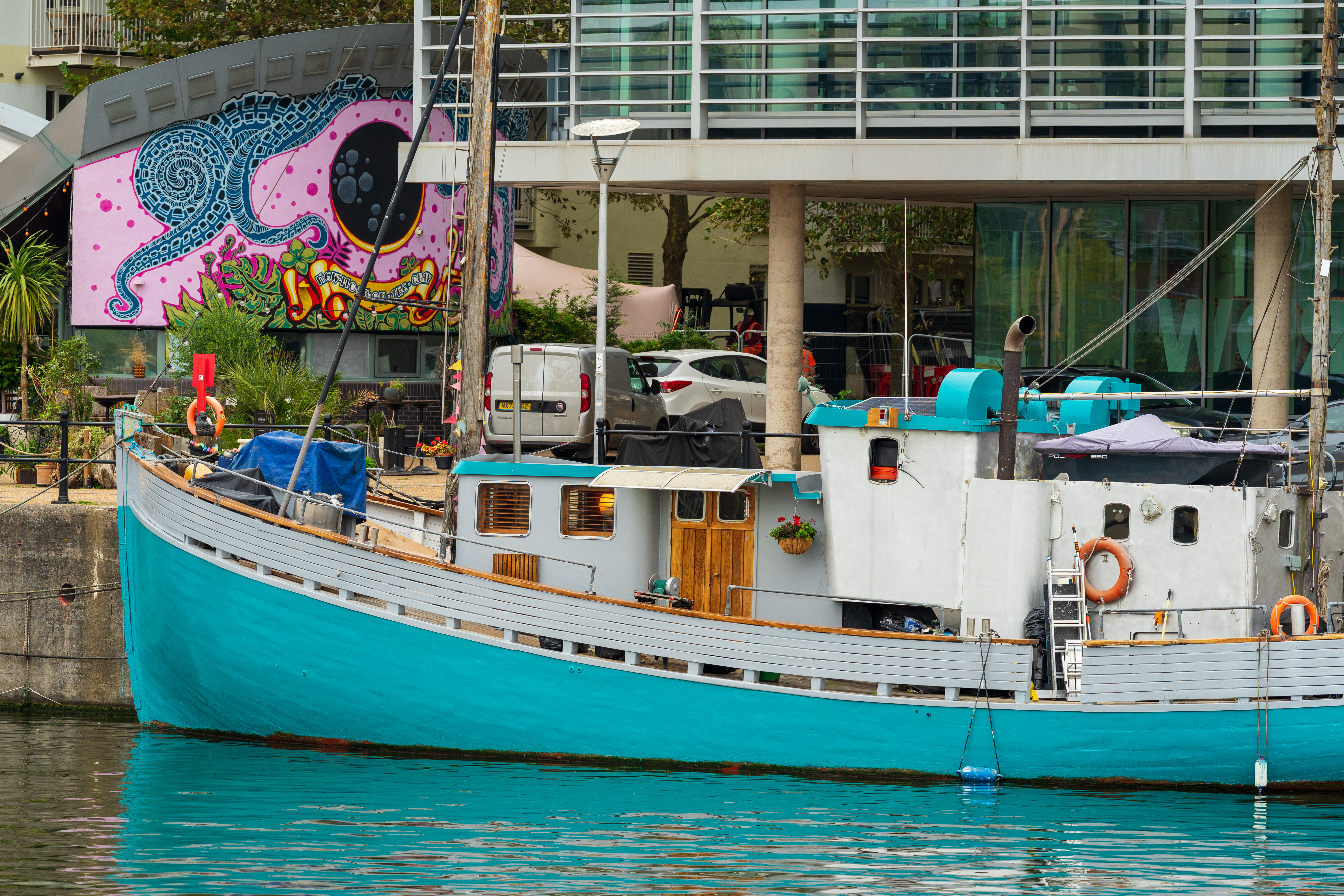
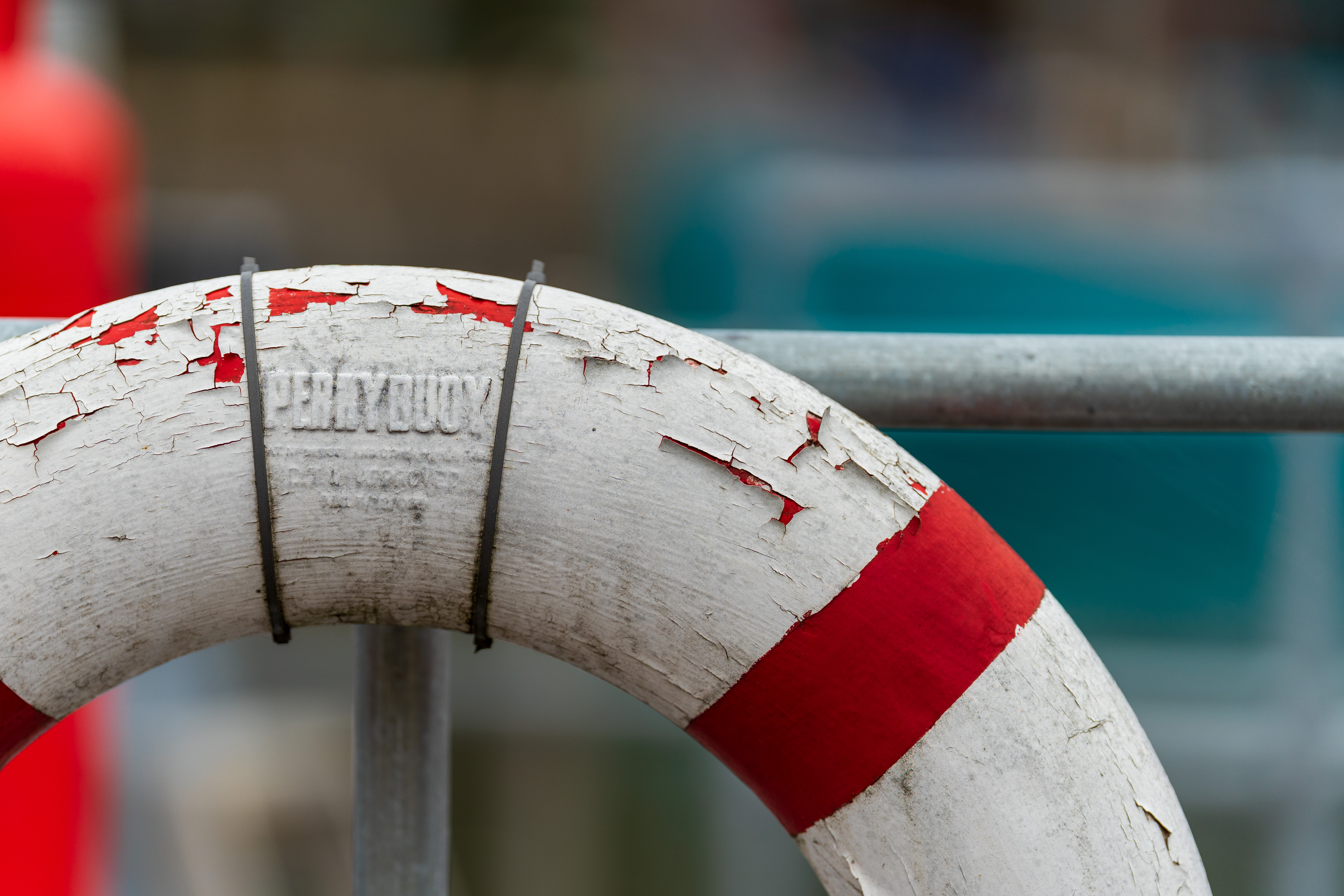






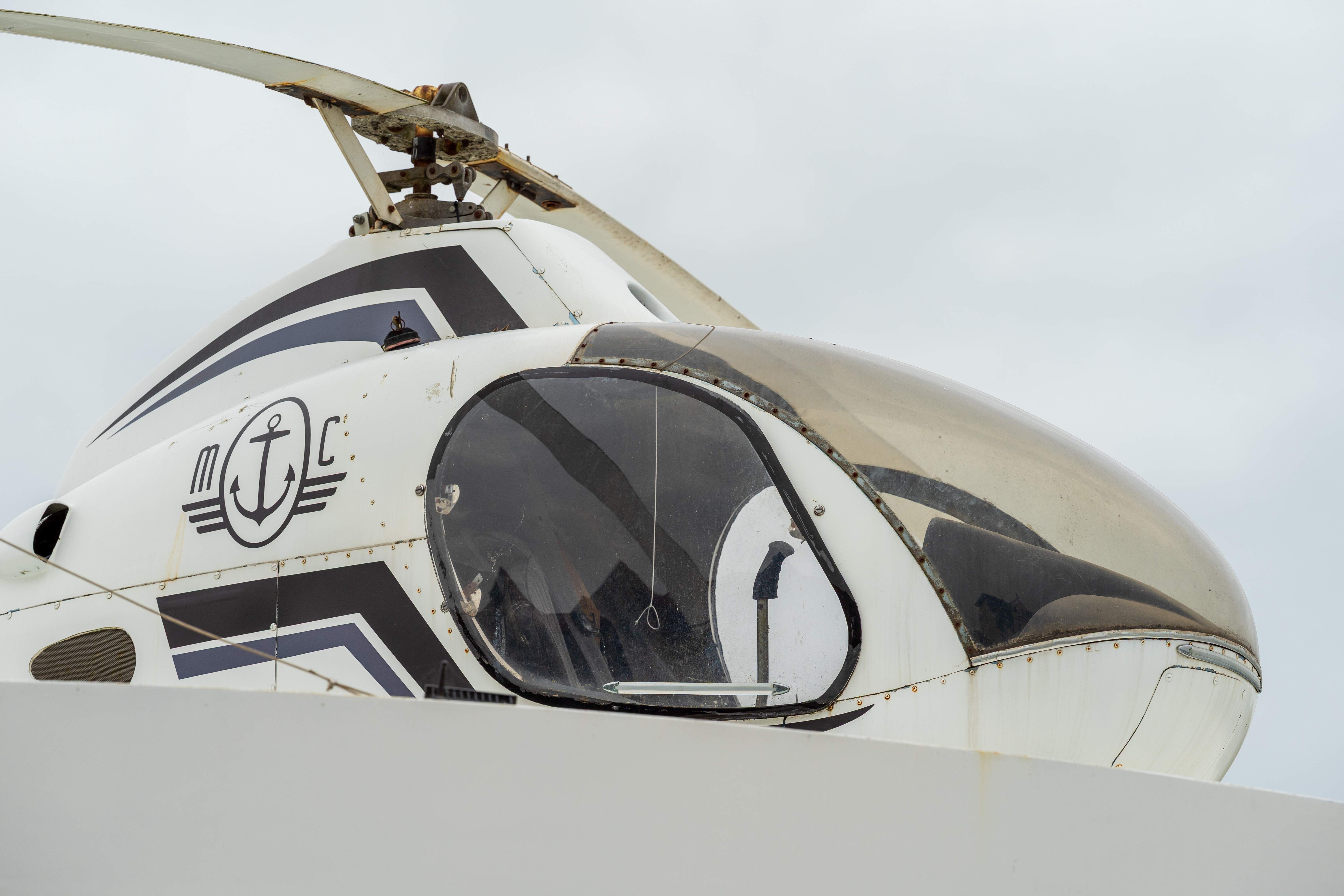






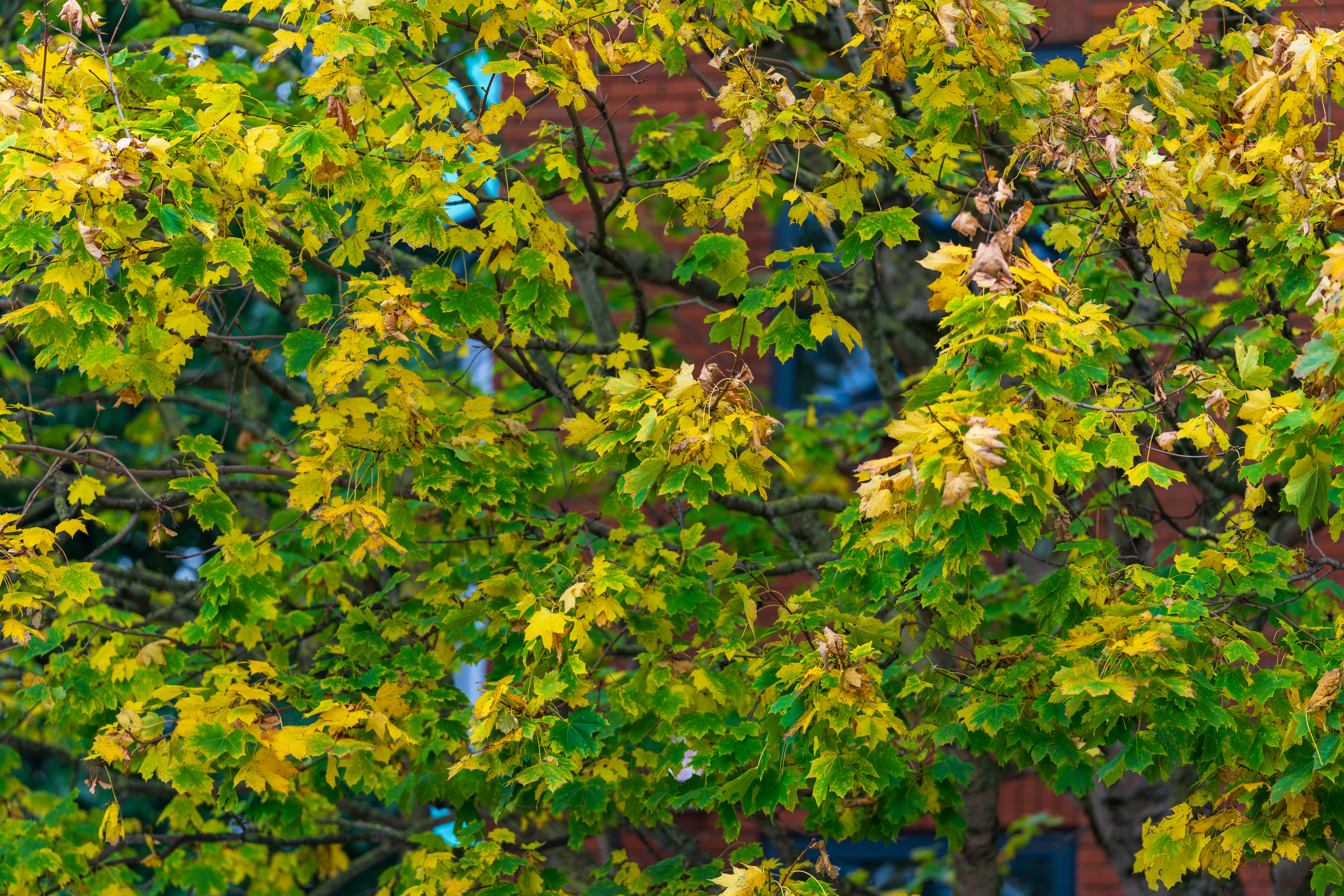



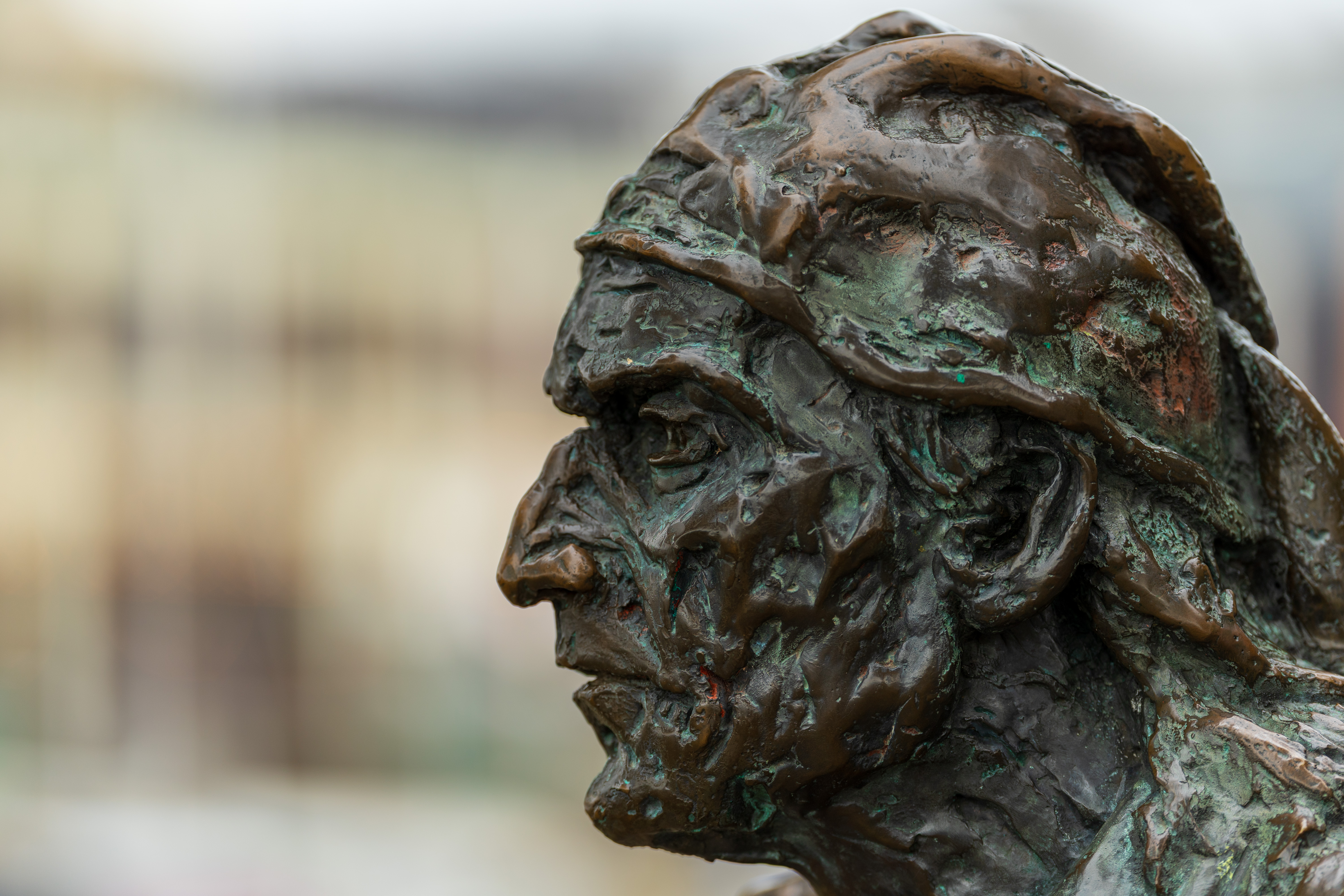
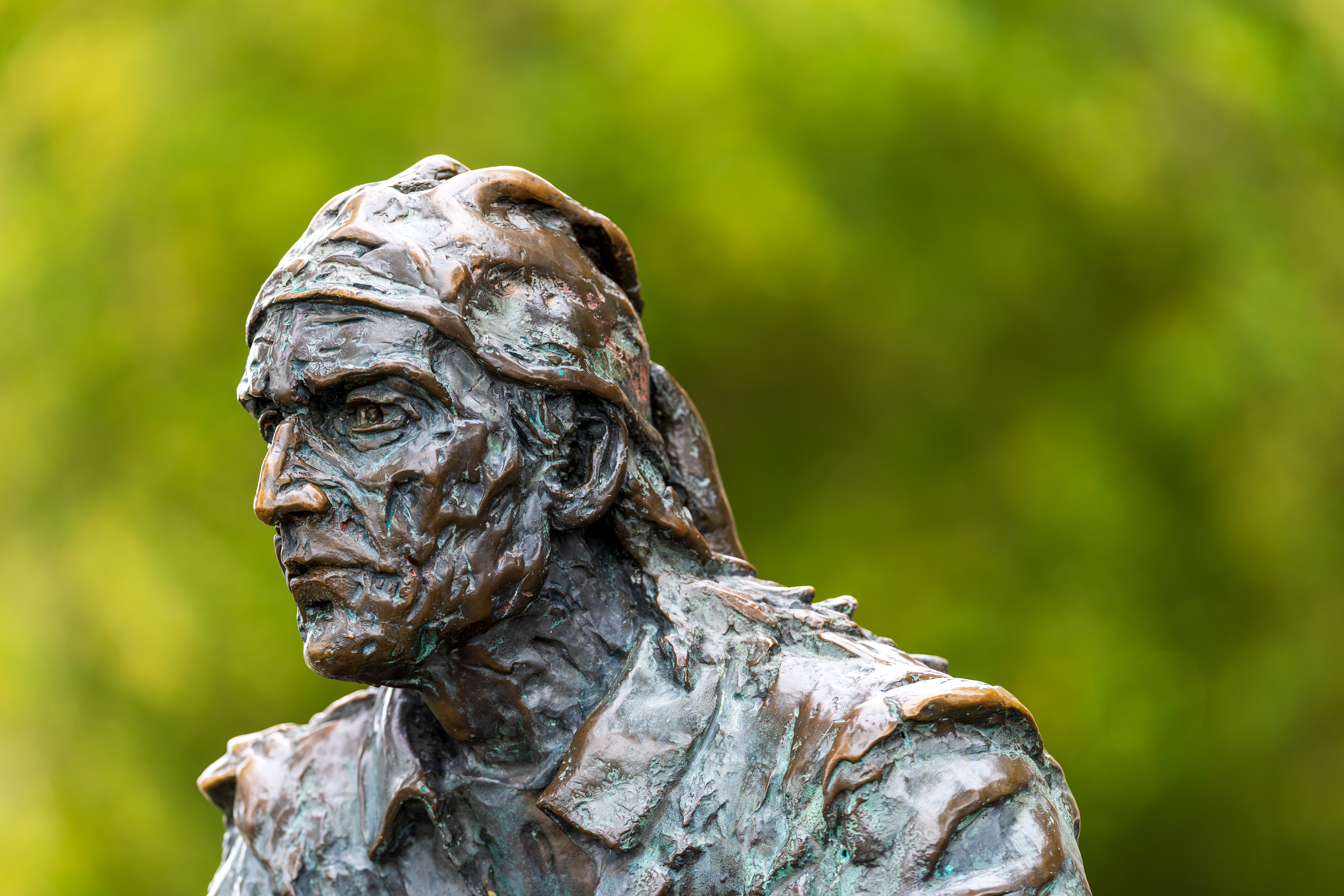

Sigma 200mm f/2 DG OS Sports: Lab Results
We run a range of lab tests under controlled conditions, using the Imatest Master testing suite. Photos of test charts are taken across the range of apertures and zooms (where available), then analyzed for sharpness, distortion and chromatic aberrations.
We use Imatest SFR (spatial frequency response) charts and analysis software to plot lens resolution at the center of the image frame, corners and mid-point distances, across the range of aperture settings and, with zoom lenses, at four different focal lengths. The tests also measure distortion and color fringing (chromatic aberration).
Sharpness:
As I’d expect, extreme edge/corner-sharpness isn’t as outstanding as center-sharpness but it’s still very impressive. Overall, sharpness is absolutely superb even when shooting wide-open at f/2, and remains so through to f/8. There’s the usual impact from diffraction at narrow apertures of f/16 and f/22.
Fringing:
There’s so little color fringing that it’s generally impossible to spot in real-world images. The lens recorded some of the best lab test figures for lateral chromatic aberration out at the edges and corners of the image frame that we’ve ever experienced. Axial/longitudinal chromatic aberration is equally well controlled, even at the widest aperture setting.
Distortion: 1.4
There’s a touch of pincushion distortion, which is pretty much as expected for a telephoto lens, but it’s of a very low order and not generally noticeable, even with automatic in-camera correction switched off.
Sigma 200mm f/2 DG OS Sports: Verdict
Sigma labels its 200mm f/2 as a ‘Sports’ rather than an ‘Art’ lens. To me, it could proudly wear either or both badges with equal success, although I have to admit that it looks, feels and handles like a Sports lens. There’s definitely nothing wrong with that, as the handling is truly exotic with all the function buttons, control rings and switches I could wish for. It’s really well built and feels a fully pro-grade lens, which it is, absolutely. Fast and deadly-accurate autofocus teams up with highly effective dual-mode optical stabilization to ensure an excellent hit rate. But ultimately it's the image quality that really won me over with this lens. It’s super-sharp with wonderful clarity, along with the most sumptuous and beautifully smooth bokeh. It’s a spectacular lens that’s brilliant for action, sports, wildlife, portraiture, landscapes and more besides.
Features ★★★★★ | 200mm and f/2 are the top features, but there’s also HLA autofocus, dual-mode stabilization, customizable buttons and a wealth of operating switches. |
Design ★★★★★ | It’s a necessarily bulky lens but the design makes handling a joy, especially with the click/de-click and lockable aperture ring. Build quality is epic. |
Performance ★★★★★ | All areas of performance are fabulous, including autofocus speed and accuracy, and optical stabilization. Image quality is sublime. |
Value ★★★★☆ | You get what you pay for and more besides but the lens is much pricier than Sigma’s equally attractive 135mm f/1.4 Art. |
Alternatives
The Laowa 200mm f/2 AF FF has slower autofocus than the Sigma and lacks any optical image stabilization but delivers the same combination of focal length and aperture rating. It’s only about two-thirds the price of the Sigma to buy and a real bargain in Canon EF, Nikon Z and Sony E mount options.
Matthew Richards is a photographer and journalist who has spent years using and reviewing all manner of photo gear. He is Digital Camera World's principal lens reviewer – and has tested more primes and zooms than most people have had hot dinners!
His expertise with equipment doesn’t end there, though. He is also an encyclopedia when it comes to all manner of cameras, camera holsters and bags, flashguns, tripods and heads, printers, papers and inks, and just about anything imaging-related.
In an earlier life he was a broadcast engineer at the BBC, as well as a former editor of PC Guide.
You must confirm your public display name before commenting
Please logout and then login again, you will then be prompted to enter your display name.

